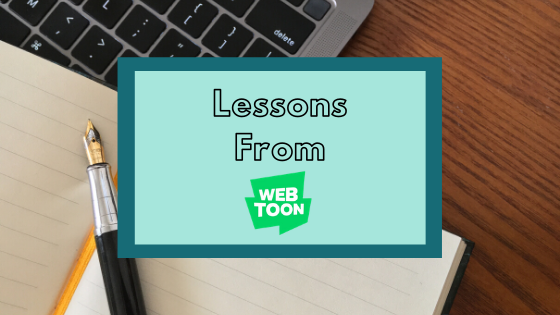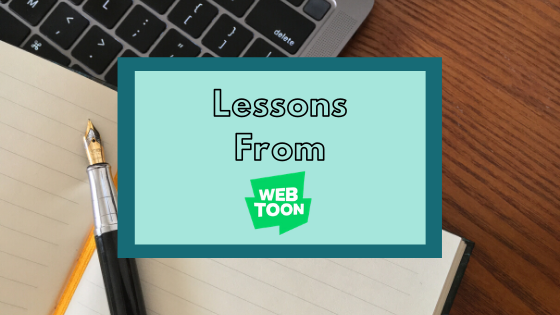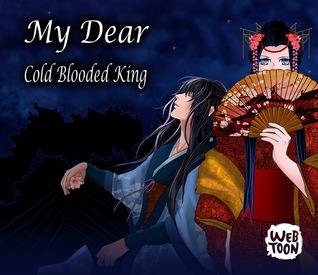
Writing Lessons from WebToons

You've probably heard of or gotten ads for WebToon, the comic app that's grown wildly popular over the past few years. If you're anything like me, you resisted downloading it for ages because I didn't want to jump on the bandwagon, and also because I didn't really find anything that interested me. But when I finally downloaded the app, I found myself hooked.
Naturally, I've found my favorites among WebToons that have finished and those that are still running. And I've put many others on a list to read when I catch up to each new comic I'm reading.
Reading this much in a different format has made me notice story structure and the way each episode follows different characters and storylines have made me think about my own stories.
Pacing
I greatly admire WebToon writers for their ability to pace the story well. Each episode is written in a way that moves the story along without rushing anything or lagging behind. This comes naturally to the format of comics and graphic novels, and it helps that the literal imagery can add to the story in ways that pure text can't. As someone who struggles with pacing, it's something I notice when other people do it well. I aspire to learn from all writers who do this well.
Using the popular series Siren's Lament as an example, each episode has a mix of fast-paced moments with panels that slow down the story. Long panels of the ocean and sunset are mixed in with regular panels to give a literal visual pause, but also to clear the space of dialogue and action. It's a clever way to break up intensity with a scene that still adds to the story without making it feel like the story is jumping abruptly in different directions.
My Dear Cold-Blooded King does this in a similar but more extensive manner. There are panels that require you to turn your phone horizontally just to see the full image, literally making you stop to see the break in the action. These moments are focused snapshots of something important/intense. Sometimes, the writer uses the transition of a sky to create a break before something else happens. This can be from a day sky to a night sky or vice versa. Many of the transitions are cleverly drawn to seamlessly blend two settings or two different parts of the story. Though this relies heavily on the visual side of the comic, it can be translated to prose too.
Pacing is all about the mix between the intense moments and the slower moments. It's success is determined in the moments of transition or times when you're forced to look at something differently. A paragraph about the scenery in the middle of an intense battle creates the feeling that time has slowed or paused - it's a good way to break up action without taking away from or distracting from the story.
Character Development
I'm often guilty of forgetting to develop my side characters, but this is something you can't really escape from in WebToons. All the characters that reappear throughout the story need to have character growth each time they appear or readers are quick to notice.
Let's Play is the best example I know of when it comes to this. We've had several chapters dedicated to side characters and their stories, showing that they're not just there to be part of the protagonist's storyline. They have lives outside of the main character, and that should be clearly depicted. And each time the characters interact with someone new or come back together after awhile, you can see the changes they've gone through from being apart or experiencing something new. One episode about the main character's dog becomes a catalyst for a conversation between the main character and two of her best friends about her focus on her dreams and her slowly budding dating life. Not only do we get to see more of the dog's personality, we get to see a different side to the characters interacting with our protagonist as she tries to talk and game and fix a toy at the same time.
By having to be super picky about each panel, WebToon writers are forced to squeeze a lot into a limited space. This makes them think about character development differently than prose writers do. No character should remain the same at the end of their time in the story, and in the case of WebToons, they usually are challenged by the end of the episode. It's a tall order, but a great reminder that every interaction should move them forward or backward in some way.

Dialogue
Text boxes make it hard to let characters ramble. And as a rambly writer, I know how hard it is to make dialogue concise. Within comics, the restriction is even heavier. Big text boxes can bore readers and make them lose interest, and I think the same can go for regular novels too.
Cupid's Arrows is an example of a WebToon that uses witty and clever dialogue to not only reveal things about the main characters, but the world they live in. The Cupids have distinct personalities and interests, but they also have an immense belief in their jobs and the idea of true love. Each line of their dialogue moves the story or their character forward, while also being incredibly entertaining. The balance of the serious with the humor makes the story fun to read and the characters likeable.
Siren's Lament is once again an example of a mastery over dialogue. The author, InstantMiso, uses humor to break up serious moment, to convey character development, and to progress the story. Most often, it's humor from one of the main trio, but it can come from any of the characters. The use of sarcasm and wit in this case builds on the story's plot - the sirens can't remember anything of their old lives. Yet somehow, one of the main trio, a former siren, is perfectly able to add suggestive quips and brilliantly witty comments into any conversation. Seemingly without much effort, it showcases the character's intelligent mind and ability to understand his surroundings, even if he can't remember his past.
For me, it's a reminder that each piece of dialogue has and should be incredibly intentional to the story. Moving the plot forward, revealing something about a character, or shedding light on the situation at hand - all things that can be done through a well thought out line of dialogue.

Details/Foreshadowing
One of my favorite parts of reading WebToons is theorizing how the storyline will continue. Most of the comments are people writing out elaborate theories of how things are connected and where the story or characters could go if they're right. It's a lot of fun to give readers just enough information that they can come up with their own ideas, all while working toward the author's grand finale.
Let's Play, my favorite WebToon, is the perfect example of this. After getting my friend Maggie into this, we've spent several hours talking after each new chapter is released. Most of it is to complain about a character we mutually dislike, but also to rave about how things are connected and where we think the story will go based off the previous episodes and clues we've gotten. Because this WebToon has two main characters and a wide cast of supporting characters, we see bits and pieces about everyone's lives that suddenly all make sense when certain people come together or the pieces of a puzzle fall into place. Sometimes the clue is in a line of dialogue, and other times it's something in the art. Either way, the story is best consumed slowly and by looking closely at each panel. You never know what the author might reveal or call back to in a later chapter, and once you've seen the threads connect, you'll wonder how you missed all the clues screaming at you.
I Love Yoo, another popular romance WebToon, also does this brilliantly. With one main character and another large cast of supporting characters, we do have to see how all the interactions affect the overall storyline. In this WebToon's case, the hints are more in the art. They allude to connections between characters, future storylines, and hidden things we didn't know about before. If you focus on the art, you'll notice little things that aren't so apparent at first glance. In later episodes, the small details come back and reveal a different path to the storyline than you could have imagined. My personal favorite thing is to look at how the characters' relationships with each other develop through the little things.

Some of these writing lessons feel incredibly obvious, but seeing them in action with art to back them up makes it feel different. I've found that reading WebToons has made me thing more about how I write and how I choose to employ the lesson's I've learned.
What's something you've learned from WebToons?


